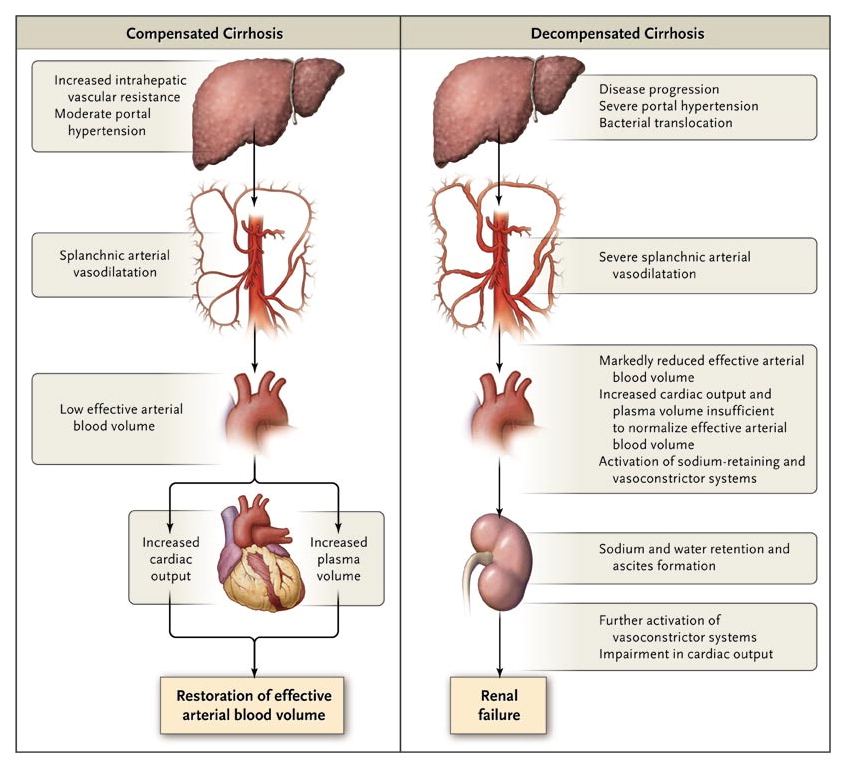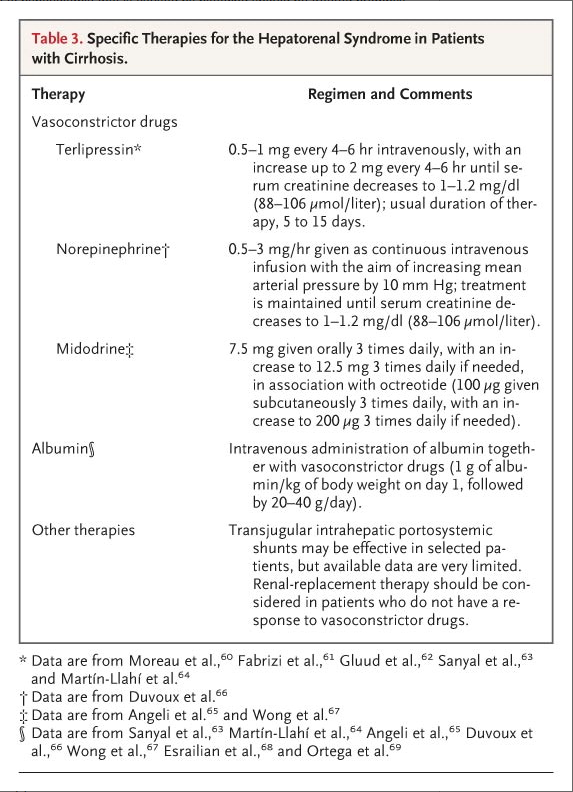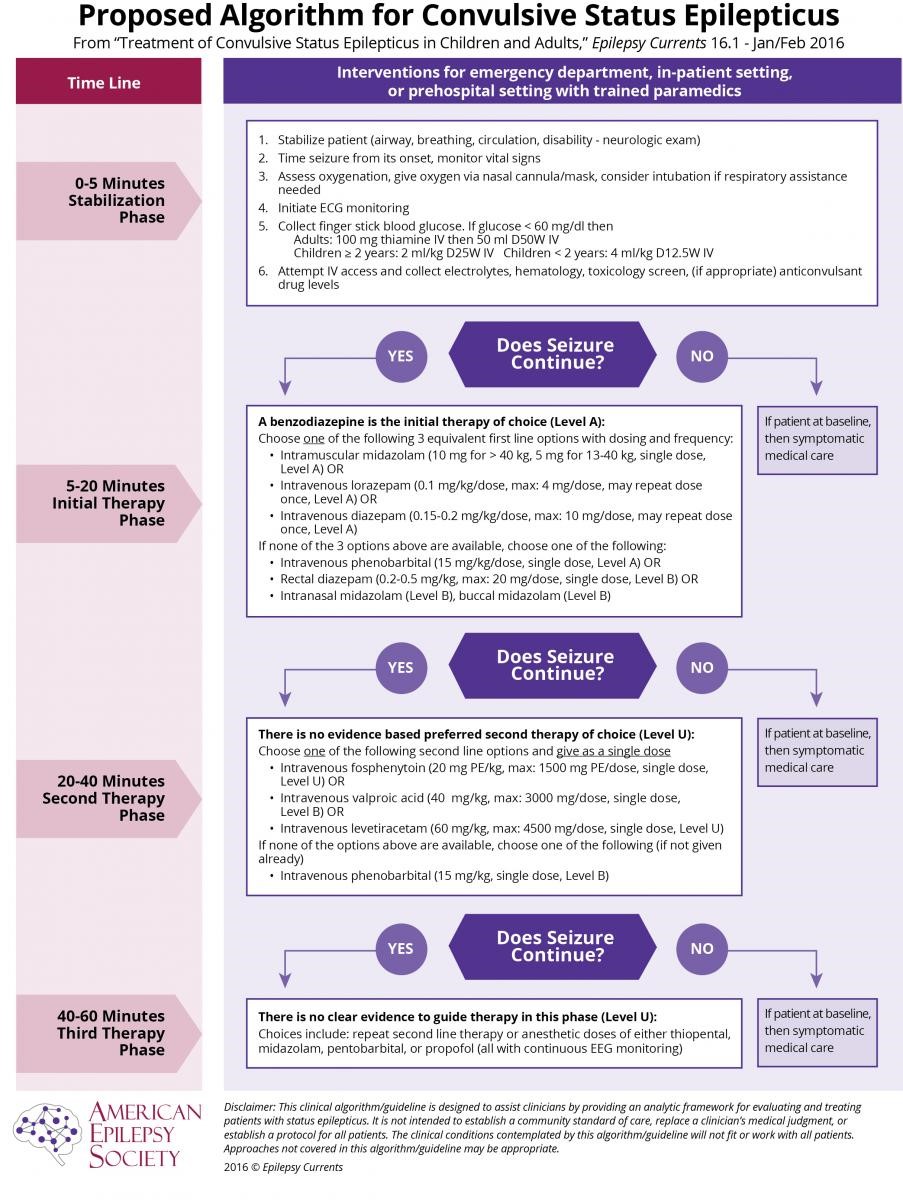-
Hepatorenal Syndrome
Type 1 HRS is characterized by rapid and progressive renal impairment and is most commonly precipitated by spontaneous bacterial peritonitis (SBP). Type 1 HRS occurs in approximately 25% of patients with SBP, despite rapid resolution of the infection with antibiotics. Without treatment, the median survival of patients with type 1 HRS is < 2 weeks, and virtually all patients die within 10 weeks after the onset of renal failure.
Type 2 HRS is characterized by a moderate and stable reduction in the GFR and commonly occurs in patients with relatively preserved hepatic function. These patients are often diuretic resistant with a median survival of 3-6 months. Although this is markedly longer than type 1 HRS, it is still shorter compared to patients with cirrhosis and ascites who do not have renal failure.


ATACH-II trial: What is the optimal blood pressure control for ICH patients?
Qureshi A, et al. "Intensive Blood-Pressure Lowering in Patients with Acute Cerebral Hemorrhage". The New England Journal of Medicine. 2016.
In patients with spontaneous intra-cranial hemorrhage with volume of < 60 cm3 and a Glasgow Coma Scale (GCS) score of >4/15, there is no differences in mortality or morbidity in patients receiving intensive blood pressure control (<140) compared to standard blood pressure control (140-180).
Further Reading:
http://www.medscape.com/viewarticle/863450?src=trendmd_pilot
Status Epilepticus

Lung Cancer Immunology Therapy: Anti-PD-1 / PD-1 Antibodies
2017 Systemic Approaches to Advance Cancer:
1. Chemotherapy
2. Molecular targets approach (Ex: EGFR Tyrosine Kinase Inhibitors)
3. Immune Checkpoint Strategies (Ex: Anti PD-1/PD-L 1 Ab)

Acetaminophen Hepatotoxicity
Stage 1 (0-24hrs)
- asymptomatic or GI upset only
Stage 2 (24-48 hrs)
- resolution or nausea and vomiting
- RUQ pain and tenderness
- progressive elevation of transaminases, bilirubin, PT
Stage 3 (48-96 hrs)
- hepatic failure (jaundice, coagulopathy, encephalopathy)
Stage 4
- death from hepatic failure
- normalization of LFT’s and complete resolution of hepatic architecture by 3 months
Treatment
Specific
- decrease absorption: activated charcoal if presented within 4 hours (controversial as if NAC given then this is a benign OD)
- N-acetyl cysteine in D5W (based on 4 hour level or empirically if > 8 hours since OD):
-> 150mg/kg LD
-> 50mg/kg over 4 hours
-> 100mg/kg over 16 hours - can be administered at any time of presentation (up to 72 hours post ingestion with some improvement in outcome)
- can be administered orally but efficacy reduced by 40% if given with activated charcoal
- provides a substrate of glutathione and acts as an alternative substrate for NAPQI metabolism via the cytochrome P450 pathway
- watch for adverse effects: rash, bronchospasm, hypotension, angioedema (antihistamines helpful and also slowing of infusion)
Liver failure management
- don’t correct coagulopathy unless bleeding (vitamin K IV, blood products)
- arterial ammonia (aids in prognostication: absolute level and failure to fall)
- glucose monitoring
- avoid hypothermia
- reverse jugular venous saturation monitoring
- ICP monitoring (controversial)
- avoid hyponatraemia
- ventilate to normocapnia
- thiopentone and indomethacin infusions (consult with liver unit)
- renal failure management
- MARS therapy: some benefit shown in paracetamol OD as a bridge to transplantation